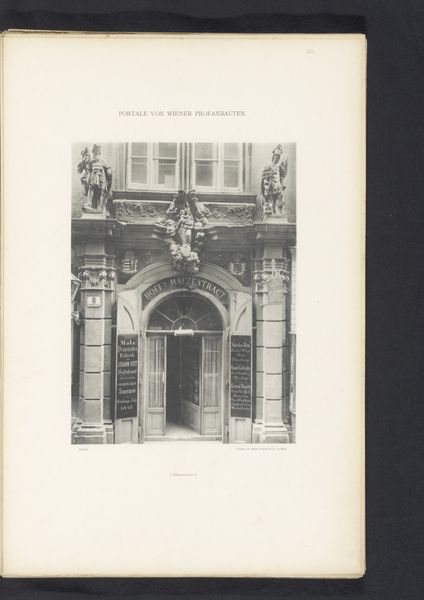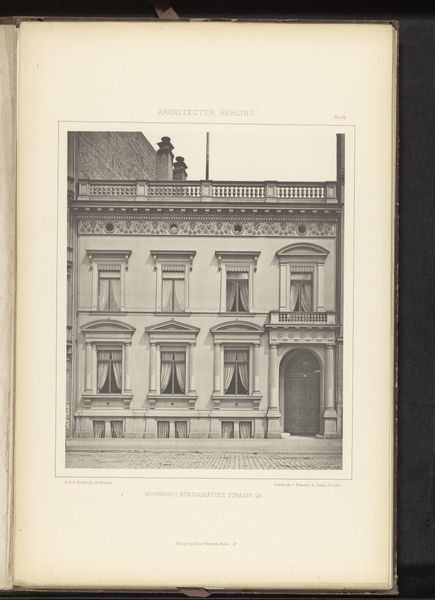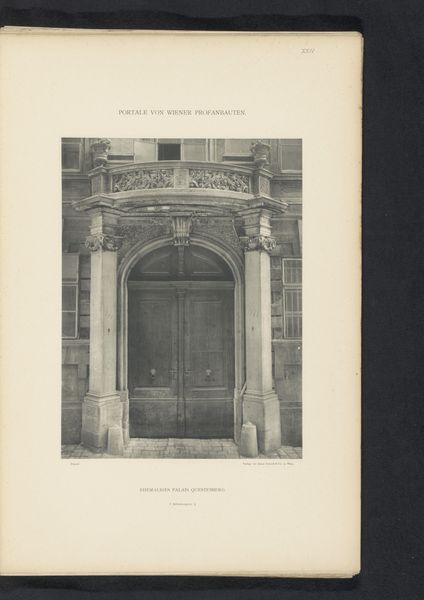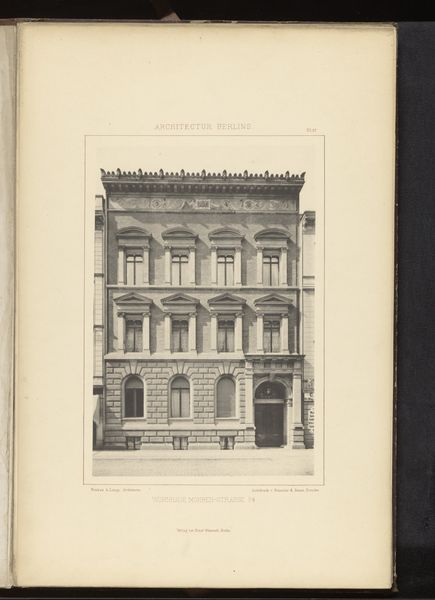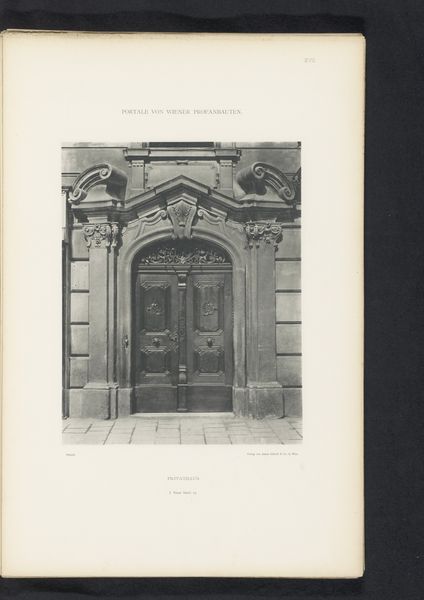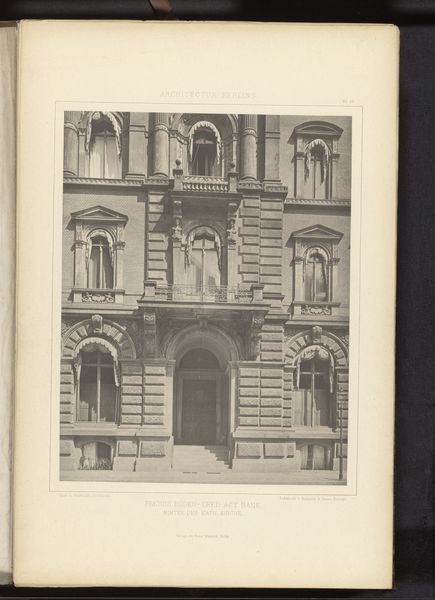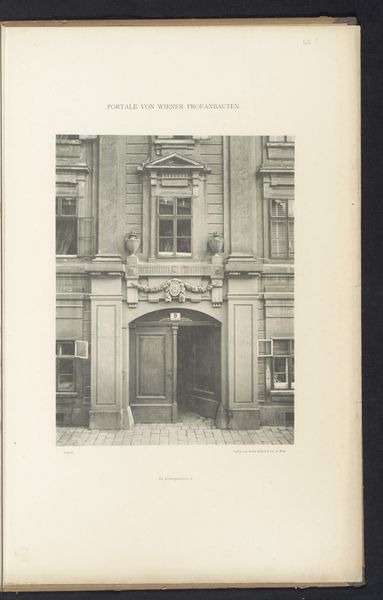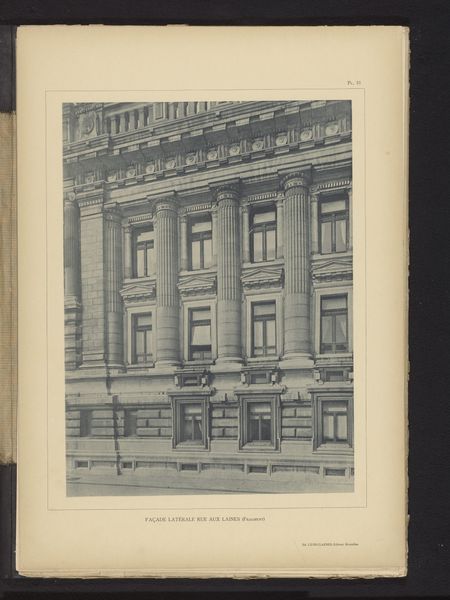
Gezicht op de begane grond van het gebouw van de nationale bank in Antwerpen, België before 1893
0:00
0:00
rommlerjonas
Rijksmuseum
print, photography, architecture
# print
#
photography
#
cityscape
#
architecture
#
realism
Dimensions: height 330 mm, width 240 mm
Copyright: Rijks Museum: Open Domain
Curator: This photograph captures the National Bank building in Antwerp, Belgium, dating from before 1893, as seen through the lens of Römmler & Jonas. Its style embraces realism, meticulously documenting architectural details through photography. Editor: It strikes me as profoundly solid, imposing almost. The stone masonry, rendered in grayscale, emphasizes permanence, weight, and the unshakeable authority associated with banking. I wonder about the labour behind those blocks, the quarries, and transportation logistics… Curator: Indeed, that's the intention. Notice how the entrance is framed with an almost temple-like quality? Banks have long understood how to borrow established visual symbols to build confidence and project trust. The solidity becomes a visual metaphor. Editor: I’m drawn to the print itself, it feels like we are seeing this building removed and displayed, abstracted from a built structure that exists somewhere beyond the frame. How many workers were responsible for printing these images of buildings meant to stand as symbols of authority? The scale feels off in this representation. Curator: What I find captivating is the symbolic weight of the architecture—it's designed to evoke power and security. Even details such as barred windows on the ground floor are less about physical protection and more about reinforcing the bank's invulnerability in the collective psyche. The photographic print reproduces the material in order to make the institution accessible. Editor: I still see the image-making as another form of manufacturing; of reproducing, through human skill, labor and time, new aesthetic and ideological materials. I agree though, the symbols of a building, and especially a financial institution, really speak to its role in that society. Curator: Looking at this again makes me consider how different cultures assign meaning to architectural forms—it speaks volumes about social structures and hierarchies of the late 19th century. Editor: For me, reflecting on this makes me appreciate that beneath every grand symbol lies immense human effort in production—something too often hidden from view.
Comments
No comments
Be the first to comment and join the conversation on the ultimate creative platform.

